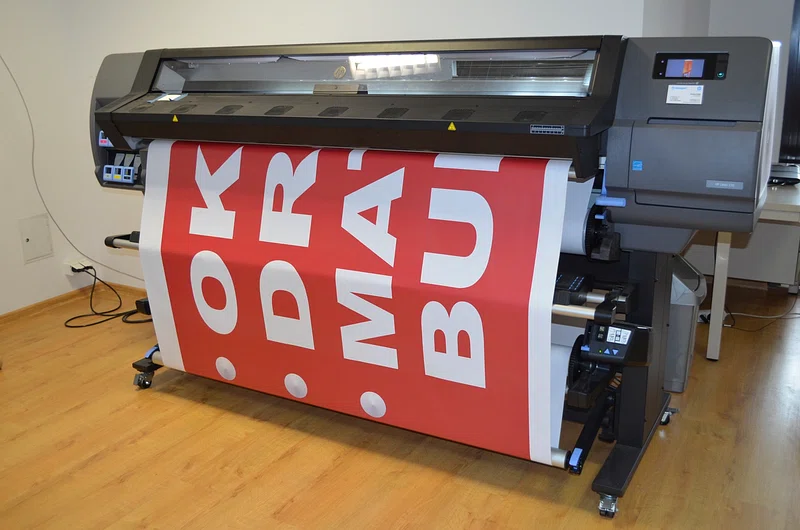Automated earnings streams are more accessible now with print on demand models.
Automated earnings streams are more accessible now with print on demand models.
Blog Article
Understanding Exactly How Digital Printing Transforms the Printing Sector
The printing industry, long steeped in traditional techniques, is undergoing an extreme transformation with the development of electronic printing. This cutting-edge modern technology, which avoids the requirement for printing plates, allows quick manufacturing and customization, reshaping the landscape of print communication. With its possible to spur interaction with individualized content and to use lasting solutions, it's clear that digital printing is even more than a technical innovation; it's a crucial game changer. However how exactly does it transform the industry? Allow's check out.
The Advancement of Digital Printing: A Quick Review
Given that its beginning, electronic printing has gone through considerable improvements, continually transforming the printing sector. Its development started with the advancement of xerography in the mid-20th century, a procedure which laid the groundwork for laser printers. With the introduction of the 90s, electronic printing innovation started to mature, and the market experienced the introduction of direct imaging presses, which eliminated the requirement for printing plates. As the brand-new millennium unfolded, advancements in technology further stimulated the growth of digital printing, causing the production of high-speed inkjet printers. These tools supplied remarkable top quality and speed, forever changing the landscape of the industry. Today, electronic printing stands as a testimony to human technology, continually progressing to meet the ever-changing demands of the modern globe.

Unboxing the Innovation Behind Digital Printing
Looking into the complexities of electronic printing innovation, one encounters an abundant tapestry of advanced equipment and complex formulas. At the heart of this process exists a digital photo, which is processed by software program that divides it right into a grid of dots. These dots are then transformed right into a digital code. This code is analyzed by the printer, which uses it to specifically deposit beads of ink onto the substratum. The droplets are so tiny and precise that they develop an image that is essentially indistinguishable from the initial. This detailed system, reinforced by innovative software and high-resolution imaging, has actually transformed the landscape of the printing industry, leading the way for unprecedented degrees of information and accuracy.

The Benefits of Digital Printing for Services
Understanding the modern technology behind digital printing supplies a clear photo of its accuracy and information. For companies, this converts into countless advantages. Digital printing uses unmatched rate, allowing firms to fulfill tight due dates without endangering on high quality. Next, it reduces prices as there are no plates or physical configuration, making it perfect for small-volume printing jobs. Additionally, this modern technology supplies exceptional consistency with each print outcome, eliminating variations usually seen in conventional approaches. Digital printing is ecologically friendly, utilizing less ink and creating less waste. The complete capacity of electronic printing is recognized when utilized for personalization and personalization, a topic that will certainly be covered in deepness in visite site the following section.
The Duty of Digital Printing in Modification and Personalization
While traditional printing methods deal with modification and personalization, digital printing succeeds in these locations. It enables the very easy modification of styles, visit this website without the demand for costly and time-consuming plate adjustments (print on demand). This allows companies to tailor items to individual consumers, meeting specific demands and enhancing consumer contentment
Digital printing likewise permits variable data printing, where aspects such as text, graphics, and pictures might be changed from one published item to the following, without reducing the printing procedure. This is particularly valuable for direct advertising and marketing campaigns, where tailored messaging can significantly enhance feedback rates. This way, electronic printing not just transforms the printing market yet additionally transforms the way services connect with their consumers.
Analysing the Environmental Effect of Digital Printing
Although electronic printing has actually been admired for its duty in customization and personalization, it is important to analyze its ecological influence. Digital printing can be much less inefficient than traditional methods, because it operates on a 'print on demand' basis, getting rid of the requirement for big print runs that can cause excess and waste. In addition, it makes use of fewer chemicals and produces less unstable organic compounds (VOCs) contrasted to counter printing. Nonetheless, the power use of digital printers can be high, resulting in boosted carbon impact. In addition, making use of non-recyclable printing parts and the difficulty of e-waste administration present substantial ecological worries. Consequently, while electronic printing has lots of advantages, its environmental impact must important source be conscientiously managed.
Final thought
In conclusion, electronic printing has changed the printing industry, using rapid, cost-efficient, and top notch solutions. It promotes customization, boosting customer involvement, and utilizes a lasting print-on-demand design. As this modern technology continues to advance, its effect on organization communication, consumer complete satisfaction, and ecological sustainability becomes progressively extensive. Understanding these modifications is essential for organizations to leverage the benefits of electronic printing properly.
Report this page